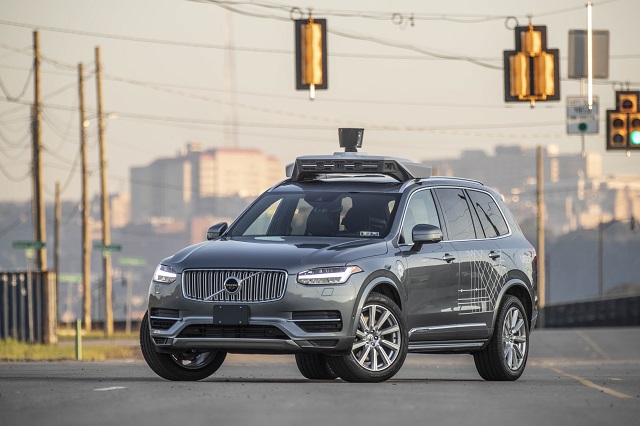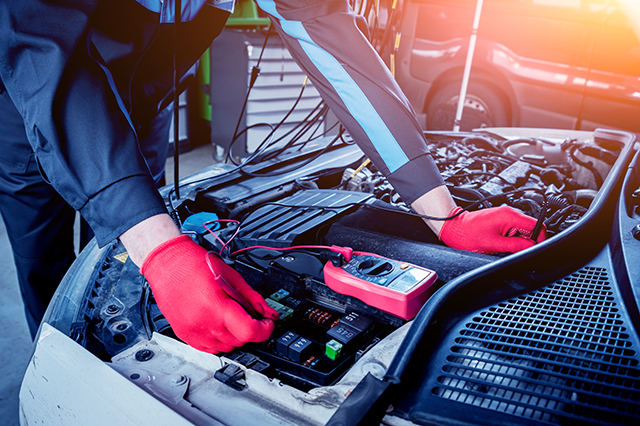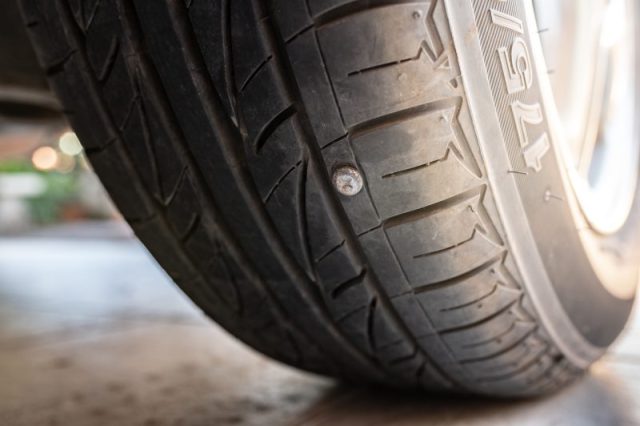The future of self-driving cars is a hot topic in the automotive industry, and rightfully so. In theory, unmanned vehicles have the ability to revolutionize transportation.
A widespread use of autonomous vehicles could have dramatic societal effects including the reduction of traffic fatalities (94% of which are caused by human error, according to the National Highway Traffic Safety Administration), a dramatic improvement in traffic flow and providing mobility to the elderly and disabled.
Although the public has yet to fully embrace the idea of riding in a car without a human driver, technology companies and car manufacturers have been focused on getting these vehicles on the road. But where are we today and what does the future of autonomous vehicles hold?
Levels of Autonomy
To understand where self-driving car technology stands now and where it may get to in the future, we first need to establish what exactly makes a car autonomous. As defined by the Society of Automotive Engineers and adopted by the U.S. Department of Transportation, there are six levels of driving automation ranging from 0 (fully manual) to 5 (fully autonomous).
Level 0 (No Driving Automation)
These cars are manually controlled without any automation.
Level 1 (Driver Assistance)
The lowest level of automation is defined as a vehicle that features at least one driver-assistance system. An example of this is cruise control, which keeps a safe distance between you and the car ahead of you by using radars and/or cameras. A feature like this falls under the driver assistance umbrella and not automation because it still requires a human to control other aspects of driving, such as steering.
Level 2 (Partial Driving Automation)
Level 2 consists of a vehicle that has combined automated functions, such as steering and acceleration. A common example is autopilot, which controls the speed of the car and can also detect lane markings to keep the car in the proper lane. This level still requires a driver that monitors the environment at all times.
Level 3 (Conditional Driving Automation)
The jump to level 3 is when we start to get to vehicles that are truly automated – meaning they can essentially make their own decisions. Level 3 cars have what are known as environmental detection capabilities. They take in information through a system of cameras and radars and can then perform most driving tasks. Human drivers are still required and must be ready to take control of the car.
Level 4 (High Driving Automation)
Level 4 vehicles are able to perform all driving functions but only in certain conditions. These cars are usually unable to operate autonomously in un-mapped areas or in severe weather conditions.
Level 5 (Full Driving Automation)
These vehicles will be able to perform all driving tasks under all conditions.
The Current State of Self-Driving Cars
The technology behind autonomous vehicles has come a long way in short amount of time. Level 2 and 3 autonomy are becoming widely available in cars today. Tesla’s Autopilot and Cadillac’s Super Cruise are considered two leaders of such technology.
More and more states are allowing self-driving cars on public roads. This has led to leading an increasing number of companies entering the space, including May Mobility, Optimus Ride and Argo AI. Other industries currently employing AVs include senior citizen facilities and food and package delivery companies.
The most notable players in self-driving cars, however, may be ride sharing services. Lyft has partnered with Google parent company Alphabet’s self-driving car unit Waymo to offer self-driving rides in some parts of the country. Uber has done the same.
The Future of Self-Driving Cars
Although many major manufacturers have invested heavily in autonomous vehicles, don’t expect to find self-driving cars at the dealership any time soon. According to the University of Michigan’s Center for Sustainable Systems, the majority of industry experts predict level 4 AVs to be available around 2030.
There are a host of technological, safety and legislative hurdles that still need to be cleared. Currently, there are no national standards or guidelines for self-driving cars. Additionally, new concerns have been raised recently over cyber security. It has been found that autonomous vehicles can be susceptible to malicious software. So, while self-driving technology has progressed significantly of late, it’s a very real possibility that we will never see level 5, fully automated cars.
How do you feel about self-driving cars on the road? Concerned? Excited? Let us know in the comments below.
8 Thoughts on “The Future of Self-Driving Cars”
Leave A Comment
Comments are subject to moderation and may or may not be published at the editor’s discretion. Only comments that are relevant to the article and add value to the Your AAA community will be considered. Comments may be edited for clarity and length.



















Adam E. raises the question of liability. The short answer is insurance companies. They may well end up being the arbiters of the maturity and rate of acceptance of the technology. However, part of me expects that fleets will be the early adopters and the fleet owners will accept or assign the liability. It will be a good thing when the liability shifts away from the driver.
I remember when “cruise control” was an extra cost option. It will take a generation or two to get to fully autonomous cars. In the meantime, automation will save many lives. I remember when early autopilots were limited to one axis, “wing levelers,” but we have been doing automated landings for a generation, now, at sea, on aircraft carriers.
I am concerned who is responsible when things go wrong.
Cars with automatic driving are, so far, a menace. Drivers have slept rather than being Alert, thinking the car can drive itself so I’ll nap. People have been injured. This bus not a safe auto and it should not be on the road at this juncture.
My wife and I feel strongly that the needed AI technology for self-driving cars is still at least several decades in the future, if then. No current computer, especially one that could fit in a car, has the processing and reasoning/judgement abilities of a human brain in case of a driving emergency. The industry should take a step back from current testing until a SAFE self-driving vehicle can be built, and not sacrifice any more lives with this project. Even one life already lost is too many!! John L.
Agree with your views that it is still several decades away. However, when you make s statement “not sacrifice any more lives with this project” , the proponents of self driving cars immediately respond by pointing to “human errors” and how many lives are currently lost due to humans driving. Basically, if statistically they can prove that fewer lives are lost in a certain year because of self-driving cars, it is a winner for them !
There was a time when we had the debate about automated elevators, currently the safest form of transportation that we have. Would that we could get automobiles anywhere near as safe.
We sometimes forget that we could need to drive in other countries. Not so simple in some countries cars are not automatics. Also with satellites and cameras we have to think about weather condition. Ice, snow and even heavy rain can be a problem. Simple case I was driving and due to heavy snow my cameras (Subaru) were not working.